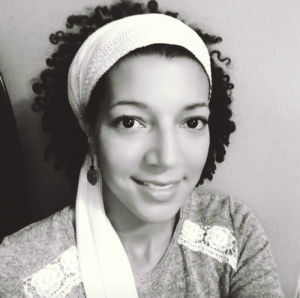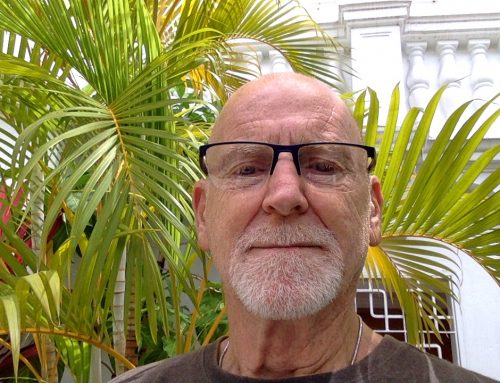Looking back on my life, I can see bipolar disorder woven through every piece of it. Though I was diagnosed at the age of 26, I now see that my disorder first manifested as debilitating anxiety in elementary school. Followed by what I believe to be bipolar mixed states and depression in middle school.
Before my diagnosis, I managed to earn an Associate’s degree. And by the age of 25, I was on track to live the life I’d intended for myself. I was blissfully married with a three year old, a newborn baby and an interior design career. Little did I know that catastrophe was hiding around the corner.
I had what’s called peripartum onset. The birth of my youngest daughter triggered my bipolar symptoms, or caused my disorder to “blossom.” After her birth, my anxiety intensified and with it came a deep sadness. I also had an inexplicable obsession with her safety. Which is still somewhat present to this day. But what I find most disturbing is my lack of awareness. I assumed I had “a touch” of postpartum depression and that it would “pass on its own.” Of course it didn’t and my symptoms worsened. I finally sought help. But by the time I did, my pain was unbearable and I’d been self-medicating with alcohol for some time.
As the affliction within me increased, so did my alcohol intake. I became fully dependent. I imagine that when people looked at me, they saw a garden-variety alcoholic, a wretched mother and wife. And while all those things were true, they were unaware that I was being tortured by my own mind. Every second of every day.
I realize I’m not unique. But at the time, my illnesses didn’t allow me the gift of perspective. They held me captive and smothered me in self-loathing and victimhood. I was so blinded by my own pain that I couldn’t see how I was inflicting it upon the people I loved most.
This is when I returned to self-injury (cutting). I first used this self-destructive coping tool in middle school. This was one reason I frequented the E.R. Along with alcohol-related visits and suicide attempts, I think there were a total of three. I realize I didn’t make their jobs easy. Still, it saddens me that the E.R. staff was always so hateful. Not because their opinions mean something to me. But because they’re professionals. And above all, they should know that what they see on the surface isn’t always indicative of the full truth. I feel that they saw a self-destructive alcoholic. That was true. But I was also sick.
Showing a little compassion takes very little effort on our part. But it has the potential to do extraordinary things in the lives of those who receive it.
My mood continued to explode. Unpredictably and in every direction. As it did, my behavior became more reckless. I made an effort to take my prescriptions, when I remembered. But I was too caught-up in self-seeking behavior to consider anything of the self-serving variety.
I began to do things married women shouldn’t do. But the manic, alcoholic brain does not consider consequences. Despite my husband’s best efforts, he couldn’t take anymore. He kicked me out of our home. After which, my behavior became so wild and careless that I’m damn lucky to be alive today.
I was in “the madness” for almost two years. Living on alcohol. The first thing I did when I awoke was take a shot of vodka, often straight out of the bottle. But I didn’t have a choice. My body required it. I was covered in bruises. Nosebleeds were common, as was ankle swelling and high blood pressure. And though I was skinny, my face was swollen. My muscles were beginning to deteriorate. I remember being so weak. My body was feeding off itself to stay alive.
I could no longer distract myself from reality. I didn’t have the energy to try. And alcohol no longer masked the absence of my family. It was clear, I’d reached a crossroad. Death or change? I chose change.
I asked my family for help. They had me on a plane the next morning to a co-occurring illnesses rehab facility in Memphis, TN. I was afraid. But it was, without a doubt, the best decision of my life.
I stayed for as long as insurance would pay, which was 41 days. That may not sound long, but it was just what I needed. I’d tried to get sober many times before. And while I’d never been more ready than I was this last time, the opportunity to go away made a huge difference. It allowed me to focus solely on healing. This increased my chances of success. Before, I’d completed many outpatient programs to no avail. Though they’re of benefit to many people.
I attribute my recovery to a combination of things. The biggest being that I finally did the difficult self-work asked of me. I worked my tail off in rehab and continued to do so when I came home. I began with twice-weekly psychotherapy sessions and 90 A.A. meetings in 90 days, then 90 more. I got a sponsor and worked The 12-Steps.
I had a fabulous psychiatrist and psychotherapist who worked together to develop my treatment plan. And as a result, helped save my life.
I have a supportive family who was there when I needed them most. I hurt them deeply and they could have forever turned their backs on me. But they didn’t. I’m grateful. Without their help, I don’t know where I’d be.
I had to gain everyone’s trust back. There was no shortcut, only time. But somehow, all the chaos and dysfunction made my family closer and stronger. As my psychiatrist says, “we beat the odds.”
 Krista is the Blogger/Creator of The Sunny Shadow, a self-growth and mental health blog. There she shares her personal experiences with bipolar II disorder to help raise awareness, eliminate stigma, and spread hope. Krista draws off her 13 years of recovery work to share self-growth tips and coping tools. Her greatest joys in life are her husband and two teenage daughters.
Krista is the Blogger/Creator of The Sunny Shadow, a self-growth and mental health blog. There she shares her personal experiences with bipolar II disorder to help raise awareness, eliminate stigma, and spread hope. Krista draws off her 13 years of recovery work to share self-growth tips and coping tools. Her greatest joys in life are her husband and two teenage daughters.
Krista can be found on her blog, Facebook, and Twitter.








Leave A Comment